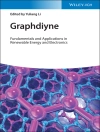It is now possible to enter a chemistry degree course at many UK universities without any formal maths training beyond age 16. Addressing this deficiency requires students to take additional mathematics training when entering university, yet the relevance of maths to chemistry is often poorly appreciated by chemistry students. In addition, many service courses are either too abstract, or aimed at physicists and engineers, for students of chemistry, who are not inclined to study mathematical techniques per se and do not make the connection between the maths they are taught and the chemistry they want to study.
Based on the successful at a Glance approach, with integrated double page presentations explaining the mathematics required by undergraduate students of chemistry, set in context by detailed chemical examples, this book will be indispensable to all students of chemistry. By bringing the material together in this way the student is shown how to apply the maths and how it relates to familiar concepts in chemistry. By including problems (with answers) on each presentation, the student is encouraged to practice both the mathematical manipulations and the application to problems in chemistry. More detailed chemical problems at the end of each topic illustrate the range of chemistry to which the maths is relevant and help the student acquire sufficient confidence to apply it when necessary.
Spis treści
A. Handling Data .
1. Units.
2. Significant figures.
3. Accuracy and precision.
4. Calculated quantities.
5. Uncertainties.
6. Maximum possible error.
7. Maximum probable error.
8. Simple statistics.
9. Statistical tests.
10. Scientific notation.
B. Algebra and Basic Skills .
11. Precedence.
12. Fractions.
13. Inequalities.
14. Indices.
15. Rearranging equations.
16. Ratios and proportionality.
17. Factorials.
C. Functions .
18. Functions of one variable.
19. Functions of many variables.
20. Equation of a straight line.
21. Inverse functions.
22. Series.
23. Real and imaginary numbers.
24. Complex numbers.
25. Factorisation.
26. Quadratic equations.
27. The exponential function.
28. Natural logarithms.
29. Logarithms to base 10.
D. Trigonometry and Vectors .
30. Trigonometry.
31. Trigonometric functions.
32. Inverse trigonometric functions.
33. Coordinate systems.
34. Vectors.
35. Moduli.
36. Scalar and vector products E. Calculus .
37. Differentiation.
38. Differentiation of polynomials.
39. Differentiation of functions.
40. Differentiation of combinations of functions.
41. Higher order differentiation.
42. Stationary points.
43. Partial differentiation.
44. The differential.
45. Integration.
46. Integration of polynomials.
47. Integration of functions.
48. Specific methods of integration.
49. Solving differential equations50. Partial fractions
O autorze
P. Yates, University of Keele, Staffordshire, UK












